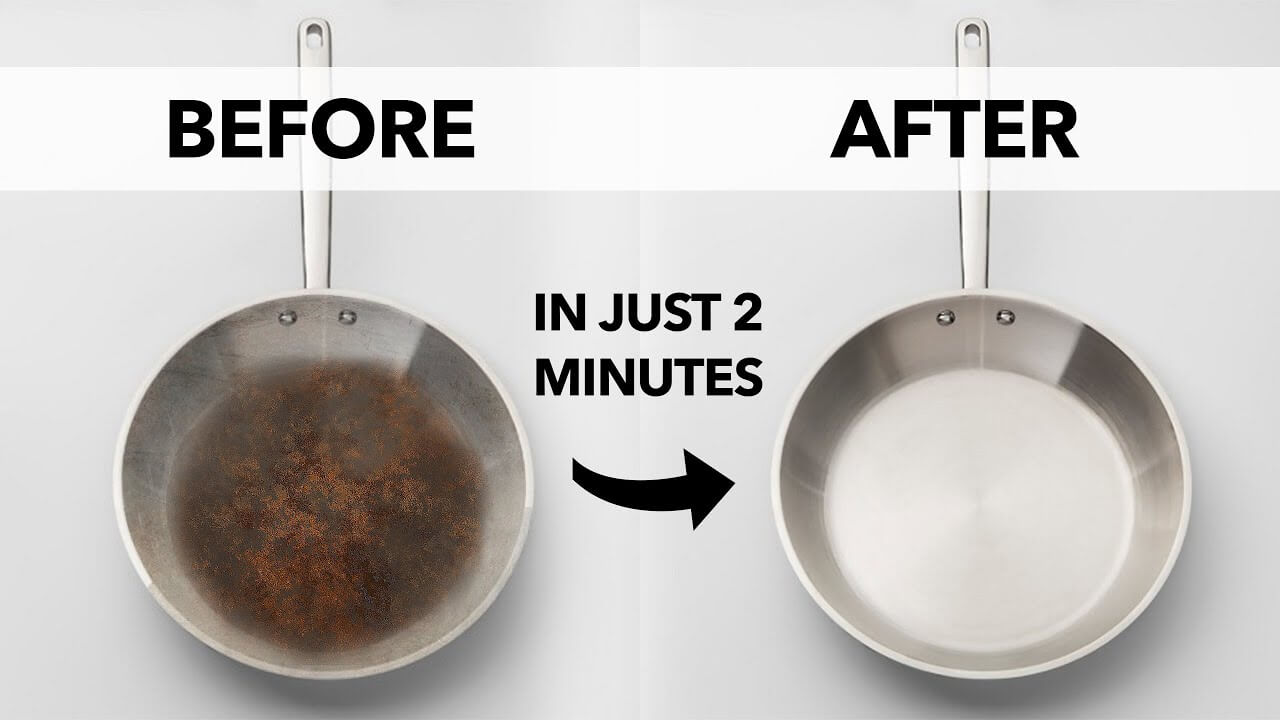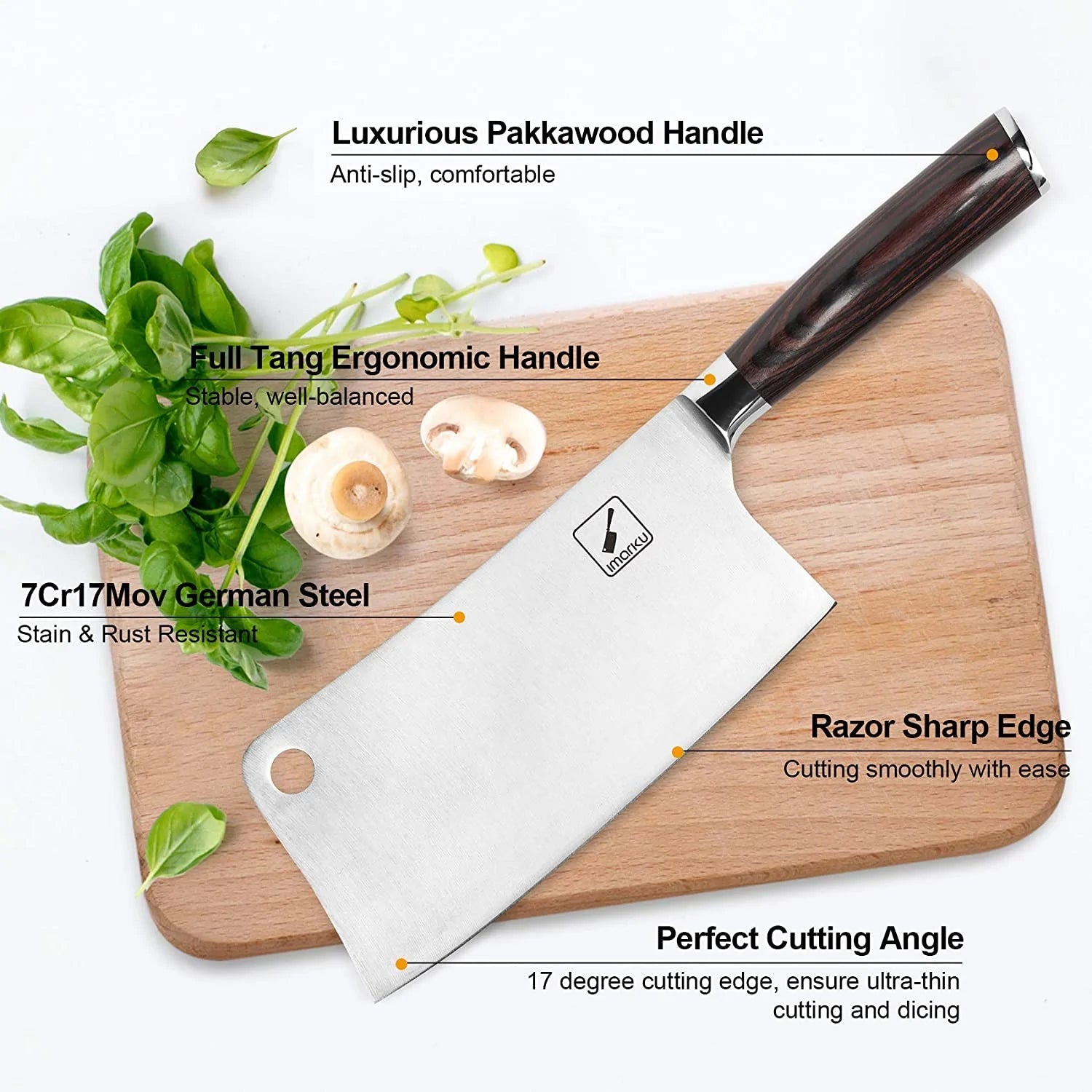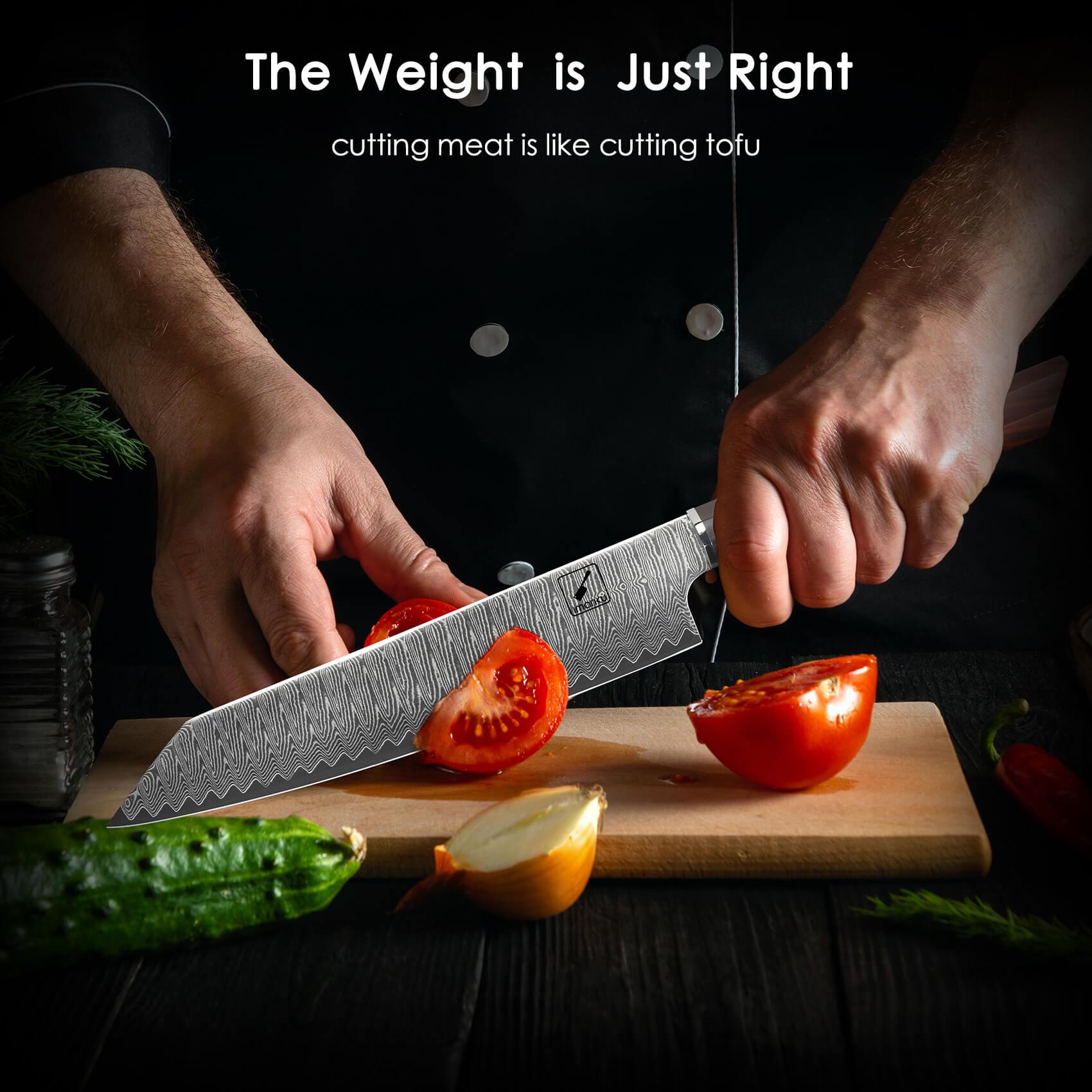TABLE OF CONTENTS
Using a stainless steel pan in preparing some of your favorite chow like stir-frying a bunch of crunchy vegetables, or searing a hearty piece of steak with sauteed onions and olives, or just simply fry some rice with an egg on top with few dashes of oregano and pepper will turn a gourmet out of simple ingredients from the pantry.
Have your pan heated, squirt a little bit of oil then toss your onions and garlic, and voila, it now sticks hard on your pan. Put a little bit of meat and it sticks even harder and leaves a black mess made from a concoction of ingredients from your perfect planned recipe. Then you are faced with a dilemma of whether to scratch your pan or scratch it hard until it shows some lines.
Is this your daily routine every time you use your stainless steel pan? Are you torn between scratching it and not scratching it because you fear it might damage your pan? Let us have something that does not involve "heavy" scratching.

How to clean stainless steel pans?
Preparing something nice with your stainless steel pans is like doing artwork, cleaning, and washing it is another story. It is like performing drills for the marines. You have to exert a lot of effort to show your drill instructor that you are just doing fine although your arms and hands ache like they are about to break. Here are some tips on how to clean your pans without the heavy scratching part.
Clean your stainless steel pan using boiling water
- This is probably the simplest and the most basic method or way of cleaning stainless steel pan without heavy scratching.
- Scrub your pan with a non-abrasive scrubber and fill the pan with water with a little dish detergent.
- If you see that stuck food particle is completely submerged, boil the water and slowly, scrape the excess food particle with a spatula.
Clean your stainless steel pan using baking soda and vinegar
- First, fill your stainless steel pan with water up to the point it covers the stuck food particle
- Put about 1 cup of vinegar and boil the water
- Once the water boils, remove the stainless steel pan from the heat
- Pour about 2 tablespoons of baking soda
- Mix them properly and thoroughly
- Scrape using a non-abrasive scrubber to remove the pan of any remaining stuck food particles
Clean your stainless steel pan using Cream of Tartar
- Mix the cream of tartar with water until it has the consistency of a thick paste
- Spread it to cover the area where you want it to be cleaned
- Soak the pan with the mixture overnight
- Remove any remaining food particles by scrubbing and rinsing your pan the following day
Clean your stainless steel pan using lime and a bit of salt
- Extract the lime juice by squeezing it hard on your pan
- Add the salt
- Let the mixture rest in your stainless steel pan for a couple of minutes
- If your mixture calls for additional salt, you may add it gradually until you have the desired consistency that you want
- Scrub your pan using a non-abrasive scrubber
- If you noticed that the food particles have been removed, rinse and dry your pan so that it will be ready for storage
What are the recommended sponge and pads for stainless steel pans?
Are you worried that using the incorrect pad or sponge would affect the appearance of pans? Does it bother you that after scrubbing it, your pan looks undescribable due to scratches? A lot of supposed-to-be high-quality sponges that you can purchase both online and on the grocery would not be what you are expecting them to be.
Replacing worn-out pads can be costly over time if it entails replacing them every week or so, one good option that is a balance between practicality and usefulness should be considered on having to choose the best product for your needs.

- Using Scotch-Brite Dobie All-Purpose Cleaning Pads can help you with the job, you can use them without worrying that they might scratch your pan's surface and leave unwanted marks that can potentially destroy your pan's looks. It comes in different sizes and is proven to last long. It is known to be durable making it the best choice for cleaning your stainless steel pans.
- Another option is using Copper Sponge, it is perfect for your everyday dishwashing needs. It is non-abrasive leaving your pan scratch-free and shiny. Preserve the luster of your stainless steel pan with this copper sponge. It thoroughly cleans your pan's surface without worrying that it might leave some scratches and marks that would damage your pans. Like the all-purpose pad, it is available in groceries and on some online stores and it is budget-friendly and can be washed in warm water for a clean sponge that is ready to tackle another set of cleaning and scrubbing routines.
- If scraping using a cleaning pad or a copper sponge and the food particle won't seem to budge, this Scotch-Brite Non-Scratch Scour Pad might be what you need. Remove those pesky food particles that stick to your pan's surface and make it shiny and look brand new again. Put a little effort into scrubbing and it would come a long way, it comes cheap and inexpensive and can be readily purchased in most groceries, supermarkets, and online stores.
- For more stubborn food particles that would outrightly refuse to leave your pan's surface, you can use 3M Scotch-Brite Stainless Steel Scouring Pads, scrape the stubborn lasagna, or that sticky beef steak sauce that does not want to leave your pan. It is sure to last longer and won't rust. Having to use these scouring pads for months allows you to save more money on cleaning solutions. The ball-shaped pad is so easy to hold and doesn't hurt your hand. Use it for your stainless steel pans, pots, or grill. Don't let that food residue ruin your day.






















Leave a comment
All comments are moderated before being published.
This site is protected by hCaptcha and the hCaptcha Privacy Policy and Terms of Service apply.